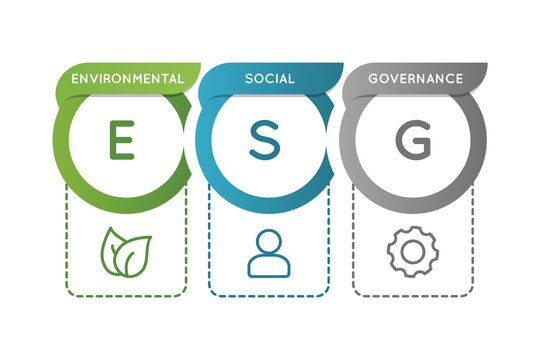
by Sophia Riley | Jul 11, 2024 | Business Management
Automating Environmental, Social, and Governance (ESG) reporting is becoming an essential strategy for companies committed to sustainability. By automating the ESG reporting process, businesses can streamline data collection, improve accuracy, and ensure timely dissemination of information. Automation helps integrate sustainability into the core business processes, making it a critical component of operational strategy.
The shift towards automation in ESG reporting addresses the increasing complexity and volume of data required by regulators and stakeholders. This transformation enhances efficiency and helps companies maintain compliance and improve their sustainability credentials in the eyes of investors and customers.
Assessing Your Current ESG Reporting Process
Before implementing automation, it’s crucial to assess the existing ESG reporting processes thoroughly. Identify the areas where manual processes contribute to inefficiencies or inaccuracies. Understanding the current workflow helps pinpoint the specific automation needs and sets clear objectives for the transition.
This assessment should also include reviewing the tools and technologies currently in use. Evaluate whether these can be integrated with new automation solutions or if a complete overhaul is necessary. This initial review will guide the selection of appropriate automation tools that align with the company’s ESG goals.
Choosing the right tools is pivotal for successful automation. Look for software that can integrate seamlessly with existing systems and supports specific standards and frameworks relevant to your industry, such as GRI, SASB, or TCFD. The tools should be scalable to accommodate future growth and flexible enough to adapt to changing regulatory requirements.
Additionally, consider the software’s user-friendliness. It should be accessible to all relevant employees to ensure widespread adoption and effective use. Training and support from the software provider are also crucial to helping your team make the most of the automation tools.
Implementing ESG Automation Software
Implementation starts with a detailed plan that outlines key milestones, responsibilities, and timelines. Collaboration across departments is essential to ensure the software integrates well with all facets of the business. This phase often involves customizing the software to meet specific reporting needs and ensure it captures all relevant data.
Pilot testing the software with a small team before a full rollout can help identify any issues early in the process. Feedback from these initial users is invaluable for making necessary adjustments and effectively training the wider team. A successful pilot test paves the way for a smoother company-wide implementation.
Data Integration and Consolidation
Automation requires consolidating data from various sources into a single, centralized system. This step is crucial for ensuring the data is consistent, complete, and ready for analysis. Automated data integration helps eliminate silos and discrepancies that can affect ESG reporting accuracy.
The integration process may involve setting up data feeds from internal systems and external sources. Ensuring these feeds are secure and reliable is vital to maintaining the integrity of the ESG data. This consolidation makes monitoring, reporting on, and analyzing sustainability performance across the organization more manageable.
Training and Support for Staff
Once the automation tools are in place, comprehensive staff training programs are essential. Employees need to understand how to use the new systems effectively to ensure the data is used correctly and that ESG reporting processes are followed accurately. Training should cover both the technical aspects of the software and its application in the context of ESG reporting.
Ongoing support and refresher courses can help address any subsequent issues and keep staff updated on new features or changes in compliance requirements. Investing in staff training is crucial for maximizing the benefits of ESG reporting automation.
Monitoring and Optimizing the Automated Process
After implementation, continuously monitor the automated processes to ensure they work as intended. Regular audits and checks can help identify any discrepancies or areas for improvement. Monitoring also provides insights into the effectiveness of the automation, allowing for ongoing optimization of the system.
Feedback from users should be actively sought and used to fine-tune the automation tools. This iterative process helps maintain the relevance and efficiency of the ESG reporting system, ensuring it meets the evolving needs of the company and its stakeholders.
Scaling and Expanding Automation Efforts
As the company grows and ESG reporting requirements evolve, the automation system may need to scale. Review the system periodically to ensure it can handle increased data volumes and additional reporting criteria. Scaling might involve upgrading software, integrating additional modules, or adopting new technologies.
Furthermore, as automation’s benefits become apparent, there may be opportunities to expand these efforts into other areas of sustainability and corporate reporting. Broadening automation’s scope can further enhance operational efficiencies and strengthen the company’s commitment to sustainability.
Optimizing Reporting Timelines with Automation
Automation dramatically enhances the timeliness of ESG reporting. By automating data collection and processing, companies can significantly reduce the time required to prepare and publish ESG reports. This efficiency is crucial when dealing with tight deadlines and regulatory windows that require timely submissions.
Automated systems can continuously gather and update data, ensuring that reports reflect current information. This real-time reporting capability allows companies to remain agile, responding quickly to emerging trends or issues as they develop. Moreover, automation enables more frequent reporting cycles, allowing businesses to keep stakeholders regularly informed and engaged. This increased frequency and timeliness boost transparency and demonstrate a company’s ongoing commitment to sustainability efforts.
Conclusion: Enhancing ESG Reporting Through Automation
Automating ESG reporting is a transformative step for any organization aiming to improve its sustainability efforts. Through careful planning, selection of the right tools, and ongoing management, automation can significantly enhance the efficiency, accuracy, and scalability of ESG reporting. This supports compliance, improves stakeholder communication, and drives better decision-making for sustainable growth. As companies continue to face increasing scrutiny over their environmental and social impacts, automation will be crucial in ensuring they can meet these challenges effectively and transparently.

by Sophia Riley | Jul 9, 2024 | Business Management
In the landscape of corporate sustainability, the role of automation is becoming increasingly critical, especially in ESG (Environmental, Social, Governance) reporting. Automation in ESG reporting refers to the use of technology to streamline, standardize, and enhance the processes of collecting, analyzing, and reporting data. This technology-driven approach not only simplifies complex data management tasks but also increases accuracy and efficiency.
The integration of automation tools helps companies address the growing inherent demands for transparency and accountability in their ESG initiatives. By leveraging sophisticated software and systems, businesses can more easily comply with regulatory requirements and meet stakeholder expectations. Automation transforms ESG reporting from a cumbersome, manual process into a strategic advantage.
Enhancing Data Collection and Management
One of the primary benefits of automation in ESG reporting is improved data collection and management. Traditionally, collecting vast amounts of environmental, social, and governance data has been labor-intensive and prone to errors. Automation introduces tools like sensors, smart meters, and cloud-based platforms that can collect data in real-time, ensuring it is accurate and comprehensive.
These tools can seamlessly integrate data from various sources, reducing the risk of discrepancies and enhancing the overall quality of the reporting. Automated systems also allow for the storage and management of data in a specifically centralized location, making it easier for companies to actively access, analyze, and utilize their information to make informed decisions.
Streamlining Reporting Processes
Automation greatly streamlines the reporting process itself. Reporting software can automatically generate reports based on the collected data, adhering to various frameworks and standards like GRI, SASB, or TCFD. This capability not only saves time but also ensures consistency and compliance across all reporting documents.
Furthermore, automated reporting tools can be programmed to update stakeholders with regular, timely reports. This continuous transparency is crucial for maintaining trust and demonstrating ongoing commitment to ESG goals. Automation also provides the flexibility to customize reports to meet the specific needs of numerous stakeholders, from investors to regulatory bodies.
Enhancing Accuracy and Reducing Errors
Data precision is paramount in ESG reporting. Errors can lead to misinformed decisions, reputational damage, and financial penalties. Automation minimizes human error by handling data through robust, algorithm-driven processes. Automated systems can also perform consistency checks and validate data against previous reports and external benchmarks.
This high level of accuracy helps companies ensure that their ESG reporting is not only reliable but also reflects their true impact on environmental and social factors. It builds trust and integrity in the company’s reporting processes, which is essential for stakeholder confidence.
Scalability and Adaptability
As companies grow, their data grows with them. Automation provides the scalability necessary to manage increasing amounts of ESG data without additional resource allocation. This scalability ensures that ESG reporting processes remain efficient regardless of company size or data volume.
Moreover, automated systems are highly adaptable. They can be quickly updated to reflect changes in ESG reporting standards or to incorporate new types of data. This adaptability is critical in a regulatory environment that is constantly evolving and where new sustainability challenges continuously arise.
Advanced Analytics and Insights
Beyond simplifying the process of ESG reporting, automation enables deeper analysis and insights. Automated tools use advanced analytics to interpret ESG data, identify trends, and predict future patterns. This can help companies not only report on their current status but also plan their future ESG strategies more effectively.
For example, predictive analytics can help a company forecast its potential environmental impact under different operational scenarios. This insight allows companies to make proactive adjustments to their practices, better aligning with regulatory expectations and corporate sustainability goals.
Integrating with Broader Corporate Systems
Effective ESG reporting is not an isolated activity; it must be integrated with the broader corporate management systems. Automation facilitates this integration by connecting ESG reporting tools with other business management systems, such as ERP or HR software. This integration ensures that ESG considerations are embedded in all aspects of business operations and decision-making.
This holistic approach enhances the consistency and reliability of ESG data and reinforces the role of sustainability in the company’s overall strategy. It turns ESG reporting into a dynamic tool that actively supports corporate goals rather than a static compliance exercise.
Enhancing Stakeholder Engagement and Communication
Automation doesn’t just streamline data management and reporting—it also transforms how companies engage with their stakeholders. Automated communication tools can help businesses maintain regular, consistent, transparent interactions with investors, regulators, employees, and the community. These tools can distribute ESG reports, updates, and responses to stakeholder inquiries with greater efficiency. They can also tailor communications to different stakeholder groups, ensuring that each receives information that is relevant and meaningful to them. This proactive engagement is crucial for building trust and reinforcing the company’s commitment to sustainability.
Future Trends in Automation for ESG Reporting
Looking ahead, the role of emerging technologies in automating ESG reporting is poised to expand. Innovations such as AI and machine learning offer promising enhancements in data processing, predictive analytics, and personalized reporting. These technologies can automate complex data analysis tasks, uncover hidden patterns, and provide more nuanced insights into ESG performance. As these tools become more sophisticated, they will enable companies not only to meet current compliance requirements but also to anticipate future trends and prepare for upcoming regulations. This section explores the potential future developments in automation technology that will further revolutionize ESG reporting.
Conclusion: Driving ESG Success through Automation
The application of automation in ESG reporting is transforming how companies approach their sustainability commitments. By enhancing data collection, streamlining reporting processes, improving accuracy, and offering scalable solutions, automation supports a robust ESG reporting framework. It enables businesses to respond more effectively to the challenges and opportunities of sustainability, driving better environmental, social, and governance outcomes.
As we look to the future, the integration of advanced technologies in ESG reporting will likely become standard practice, essential for businesses aiming to lead in sustainability and transparency. Automation not only makes ESG reporting more efficient but also elevates its strategic value, making it a critical tool in the pursuit of a sustainable corporate future.

by Sophia Riley | Jul 2, 2024 | Business Management
Embarking on an ESG initiative starts with understanding what Environmental, Social, and Governance (ESG) really means.
These three pillars are crucial for assessing a company’s economic performance, social responsibility, and environmental impact.
For instance, the environmental aspect focuses on a company’s practices related to energy use, resource conservation, and pollution reduction.
The social element examines how the company manages relationships with employees, suppliers, customers, and several communities where it operates. Governance, meanwhile, deals with leadership, corporate structure, and shareholder rights.
Grasping these facets helps businesses align their operational and strategic decisions with sustainable practices.
It’s about committing to operate responsibly in ways that extend beyond traditional financial metrics, setting the stage for long-term sustainability and ethical integrity in the business world.
First Steps in ESG Implementation
The initial step towards ESG integration is gaining full commitment from senior leadership. This top-down approach ensures that ESG values are embedded into the corporate culture and business strategy. Leadership must champion ESG initiatives, demonstrating a clear commitment to sustainability goals. This leadership endorsement should be communicated throughout the organization to garner wide support.
Following leadership buy-in, the next step is assessing current operations against ESG criteria. This involves identifying the most significant environmental, social, and governance risks and opportunities. Companies should perform a materiality assessment to determine which ESG aspects are most relevant to their business and stakeholders. This helps prioritize efforts and allocate resources effectively, creating a solid foundation for detailed ESG strategy development.
Setting Up a Solid ESG Framework
To establish a robust ESG framework, companies must develop and enforce policies that reflect their commitment to sustainability. These policies should cover all key ESG areas and be integrated into the company’s core operations. For example, environmental policies might include commitments to reduce emissions, increase energy efficiency, or improve waste management. Social policies could focus on improving labor practices, enhancing worker safety, and promoting community engagement.
Once policies are in place, setting measurable and achievable goals is crucial. These goals should be specific, such as reducing greenhouse gas emissions by a specific percentage over a set period or achieving a specific rating on workplace diversity and inclusion. Regular tracking and reporting on these goals help maintain accountability and drive continuous improvement.
Best Practices for Effective ESG Reporting
Effective ESG reporting is all about transparency and accuracy. Companies should strive to provide stakeholders with clear, comprehensive, and reliable information about their ESG activities. This means not only reporting on successes but also being honest about areas where the company falls short. Effective reporting should include quantitative data, such as emission levels or energy consumption, and qualitative information, like governance practices or community impact stories.
Regular updates are important to keep stakeholders well informed of progress and challenges. These reports should be published at regular intervals—annually at a minimum—and be readily available to all stakeholders. Standard reporting frameworks such as the Global Reporting Initiative (GRI) or the Sustainability Accounting Standards Board (SASB) can help ensure consistency and comparability of ESG data.
Engaging Stakeholders
Engaging with stakeholders is critical for successful ESG implementation. This involves more than just reporting—creating a two-way dialogue. Companies should actively seek input from various investors, employees, customers as well as community members to understand their concerns and expectations regarding ESG issues. This engagement can be facilitated through surveys, focus groups, public meetings, or social media platforms.
Incorporating stakeholder feedback into ESG strategies enhances their relevance and effectiveness, builds trust, and strengthens relationships with key groups. This collaborative approach helps ensure the company’s ESG initiatives are well-supported and aligned with broader societal goals.
Utilizing Technology and Data
Leveraging modern technology and data analytics is essential for managing and advancing ESG initiatives. Technology can facilitate the collection, analysis, and reporting of ESG data, making it easier to track progress against goals and actively identify areas for improvement. For instance, advanced data analytics can help companies better understand their energy consumption patterns and identify opportunities to increase efficiency.
Furthermore, technology can enhance communication about ESG efforts. Digital platforms can share ESG reports, update stakeholders on new initiatives, and engage with the community. These tools make it possible to reach a broader audience and ensure that ESG information is accessible and engaging.
Ongoing Education and Training
Continuous education and training on ESG principles and practices are vital for embedding sustainability into a company’s DNA. This includes not only training new employees but also regularly updating existing staff on the latest ESG trends, regulations, and best practices. Educating suppliers and partners can also be beneficial, as it helps ensure the company’s supply chain adheres to similar sustainability standards.
Training programs might include workshops, webinars, or e-learning courses covering topics from ethical business practices to environmental management systems. These educational initiatives help maintain a knowledgeable workforce that effectively contributes to the company’s ESG objectives.
Monitoring and Revising Strategies
Ongoing monitoring and evaluation of ESG strategies are crucial to ensure they remain effective and responsive to changing conditions. Companies should regularly review their ESG performance, using both internal audits and external assessments. This helps identify successes, uncover areas of non-compliance, and detect emerging risks.
Based on these evaluations, companies may need to revise their ESG strategies. This could involve setting new goals, adjusting policies, or implementing new practices. Continuous improvement is key to keeping pace with evolving environmental and social expectations and maintaining a leadership position in sustainability.
Conclusion: Building a Sustainable Future
Implementing effective ESG practices is crucial for companies aiming to thrive in today’s business environment. Starting with a solid understanding and taking deliberate steps toward comprehensive ESG strategies can lead to significant benefits, including enhanced corporate reputation, improved stakeholder relationships, and increased financial performance.
As the inherent demand for transparency and sustainability grows, companies that excel in ESG reporting and implementation will distinguish themselves as leaders, ready to face the challenges of a rapidly changing world.

by Sophia Riley | Jun 28, 2024 | Business Management
Have you ever wondered how companies measure their environmental, social, and ethical footprints?
That’s what ESG reporting is all about. ESG stands for Environmental, Social, and Governance.
This reporting framework helps organizations disclose non-financial information, showing how they strive to operate responsibly in these three key areas.
It’s integral to corporate transparency, providing stakeholders with a clear view of a company’s commitment to sustainable and ethical practices.
As the business landscape evolves, ESG reporting is becoming more than a voluntary initiative; for many, it’s becoming a regulatory requirement.
The Growing Importance of ESG
Today, ESG reporting isn’t just a niche interest; it’s a component critical to a business’s longevity and trust in the marketplace. As public awareness of environmental and social issues increases, companies are expected to be transparent about their roles in these areas. Investors, in particular, use ESG metrics to determine whether a company is a sustainable and viable long-term investment.
This shift is driven by the growing evidence that companies with strong ESG credentials often outperform their peers in the long run. They tend to have better risk management, stronger customer loyalty, and higher employee satisfaction—all of which can lead to superior financial performance.
Breaking Down the Components
Each component of ESG covers a specific area of corporate responsibility. Environmental criteria might include a company’s energy use, waste management, and steps to combat climate change. This is crucial in today’s world, where businesses’ environmental impacts are scrutinized heavily.
On the social side, it’s all about how a company manages relationships with various employees, suppliers, customers, and the communities where it operates. This includes labor practices, product responsibility, and human rights. Companies that excel in these areas are often rewarded with a more dedicated workforce and substantial customer base.
Governance: Ensuring Corporate Integrity
Governance involves the standards for running a company, overseeing ethical behavior, and policing itself. This includes executive pay, audits, internal controls, and shareholder rights. Good governance ensures that a company uses various accurate and transparent accounting methods and that all stockholders are given an opportunity to vote actively on important issues.
Poor governance can lead to scandals and breaches that devastate a company’s reputation and financial health. Thus, strong governance is essential for sustaining a company’s operations and ensuring stakeholder accountability.
Personal Anecdotes Make It Real
I remember working with a tech company that initially overlooked the importance of ESG reporting. They focused solely on rapid growth and technological advancements. However, as they planned to go public, investor interest revealed a crucial gap: the need for robust ESG measures and reporting.
They quickly realized that to appeal to a broader investor base and improve their market value, they needed to develop a clear, transparent ESG framework. Post-implementation, they not only saw a rise in investor confidence but also significantly improved their brand reputation and customer loyalty.
The Mechanics of ESG Reporting
Regarding ESG reporting, the process involves collecting data on numerous activities, from energy consumption and greenhouse gas emissions to workforce diversity and corporate board structure. Companies often publish this data in annual sustainability reports, which are increasingly integrated with their financial reporting.
What’s crucial here is the accuracy and comprehensiveness of the data reported. Stakeholders rely on this information to make well-informed decisions, and inaccurate reporting can lead to a loss of stakeholder trust and potential regulatory penalties.
Who’s Interested in ESG Reports?
It’s not just niche activists or environmentalists who read these reports. Investors pore over them to find companies aligned with their values or to avoid those with high-risk profiles. Consumers use this information to decide which businesses deserve their dollars, preferring companies that demonstrate ethical practices and responsibility toward global challenges.
Similarly, employees are increasingly looking at ESG metrics when choosing their employers. A company known for its strong ESG performance is more likely to actively attract and retain top talent, especially the younger generation that prioritizes sustainability and corporate social responsibility.
The Perks of Getting ESG Right
Mastering ESG reporting can significantly enhance a company’s attractiveness and operational viability. For instance, companies that show real progress in reducing carbon emissions are often favored in industries impacted by environmental regulations.
Moreover, effective ESG practices can reduce costs through improved efficiencies and lower utility bills. They can also enhance a company’s brand reputation, making it a preferred choice among eco-conscious and socially aware consumers.
Challenges in ESG Reporting
Despite its benefits, ESG reporting could be more challenging. The lack of standardized reporting criteria can make it difficult for companies to know what to include in their reports. There’s also the challenge of ensuring that all reported data is accurate, which can be particularly tough for large, multinational companies.
Moreover, developing an effective ESG strategy and reporting on it can be costly and time-consuming. However, the long-term benefits of building trust and credibility often outweigh these initial investments.
The Future of ESG
As we look ahead, the importance of ESG reporting is only set to increase. Regulatory pressures and growing investor and consumer demand for sustainable and ethically engaged companies are pushing ESG to the forefront of business priorities. Companies that can navigate these demands and provide transparent ESG reports will likely lead their industries.
Conclusion: ESG Reporting as a Key to Future Success
In conclusion, ESG reporting is no longer a mere option for companies—it’s a critical component of successful business strategy. As we move forward, the emphasis on environmental, social, and governance factors will only intensify, driven by increased global awareness and stringent regulations. Companies that excel in ESG reporting enhance their reputation and secure a competitive advantage.
They attract ethical investors, retain top talent, and build loyalty with customers who prioritize sustainability and corporate responsibility. Furthermore, ESG reporting allows businesses to identify risks and opportunities early on, promoting long-term sustainability and profitability. In a world where transparency is more valued than ever, effective ESG reporting is the key to building trust and overall credibility with all stakeholders. For businesses looking to thrive in the evolving market landscape, integrating robust ESG practices into their operations isn’t just smart — it’s essential for enduring success.

by Sophia Riley | Jun 25, 2024 | Supply Chain, Business Management
As a business owner, partnering with a reliable and trustworthy supplier is not just a necessity, but a strategic move that can significantly influence the growth of your business. By establishing a solid relationship with your supplier, you open doors to enhanced efficiency, cost savings, and innovation. This is where the true value of supplier management shines. What is supplier management, and how can it be used to gain a competitive advantage? Let’s find out.
What is supplier management?
Supply management is finding, acquiring, and managing the resources and suppliers necessary for a business’s day-to-day operations. Supply management involves purchasing physical commodities, data, services, and other vital resources that enable a company to continue and grow. Supplier management is the relationship between a buyer and a supplier, subject to goods or services being obtained and supplied into your organization, which defines the type of working relationship you should develop with your suppliers. This relationship is subject to goods or services being obtained and supplied to your organization. Managing relationships with one’s suppliers is an essential trait for all managers involved in purchasing and supply.
Why does a business need supplier management?
When it comes to determining the reasons why businesses require supplier management, there are two primary pillars that you need to be aware of:
- To determine whether or not the performance of the suppliers meets the standards of the organization
- To find opportunities for improvement while engaging with suppliers throughout the lifecycle of their products.
These two elements are the primary drivers behind the necessity for businesses to have supplier management, which guarantees that they obtain the most value from the relevant suppliers for the requirements (s) at hand. Given the resources that have been spent on the appropriate suppliers.it is essential to monitor and evaluate a provider’s performance to get the most out of their services. An organization may build a transparent relationship with its supplier if it communicates and provides feedback regularly. This makes it easier to identify areas of development and discover solutions promptly.
Additionally, supplier management can help reduce costs in numerous aspects of your contracts, such as early payment discounts and volume pricing. These cost savings can be realized. Altering your supply chain regularly results in indirect expenses, some of which might be far higher in magnitude than the monetary value.
How to build an effective supplier management system
Your company already has a supplier management system in place. But if it is managed by one person using a variety of manual and disconnected processes, then it could be a better system.
As a business owner or manager, you hold the key to building a modern and effective supplier management system. By understanding the entire supplier lifecycle and implementing modern tools and processes, you can maximize the benefits of your supplier relationships. Here are the steps you can take:
Step 1: Qualification
Who is your supplier, and why should you choose them? The qualification stage assures that you are hiring the most qualified supplier at the best price who can provide the essential goods and services you need. For the best results, it is best to evaluate potential suppliers using a standardized set of criteria.
Step 2: Onboarding
After you’ve decided on a new supplier, it’s time to add them to your system. Because the onboarding process is a two-way street, your company and the supplier must communicate information for it to succeed. Again, it is in everyone’s best interest for this procedure to be as standardized as possible.
To construct an effective workflow, you must digitize everything using online forms and electronic signatures, including the onboarding process. You will notice a reduction in the number of errors you receive due to this method. You will also be able to automate specific processes, such as sending email notifications in response to events such as approvals or signatures.
You can synchronize your criteria with the application process, which is an additional advantage of the type of workflow based on forms. This enables you to disqualify suppliers’ applications that do not satisfy your requirements, saving your company the time and effort of manually reviewing suppliers who are not a good fit for your business.
Step 3: Segmentation
Classifying suppliers is an essential component of the overall supplier lifecycle management process. It divides suppliers into distinct quadrants according to a predetermined set of variables, such as supply risk, total spend, total cost of ownership (TCO), quality, profitability, and performance.
Step 4: Collaboration
The supplier collaboration process prepares the way for the mutual development of suppliers and buyers by developing new products and services and changing existing methods. Companies that work closely with their suppliers see growth that is twice as quick as that of their competitors, who neglect the importance of supplier collaboration.
Step 5: Evaluation
Evaluation of the suppliers is the very last step of supplier management. At this point, the supplier’s performance is evaluated and checked to see if they are adhering to the conditions of the contract. The evaluation is based on various variables, such as the time it takes to deliver the product, the price, the amount of production, the quality, the technical support, and the services. In addition, it is essential to evaluate the supplier according to his capacity to deal with unanticipated procurement emergencies.
Consider developing a supplier dashboard that can supply you with data in real time to assist you in reviewing your suppliers’ performance rather than performing manual evaluations of their work on an ad hoc basis. This will save you time.
Conclusion
To wrap up, thoroughly evaluating your suppliers based on all the qualities above is crucial to transforming your competitive advantage regarding business goals. Implementing each step can further enhance your edge, providing timely insight into streamlining evaluations and a proactive approach to strengthening supply chain reliability and efficiency. Your business will be positioned ahead of the competition.





